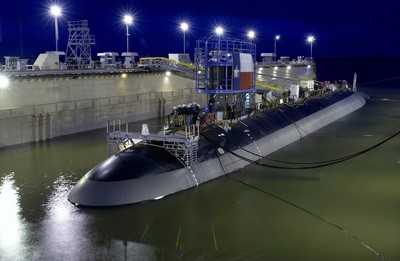 During construction of a Virginia class submarine (VCS), inspecting adherence of the special hull treatment (SHT) to the steel hull is a critical process that detects debonding or delamination that can degrade durability and performance. If a debonded area is found after the ship is delivered, the cost associated with repairing it is greater than if it were repaired during construction. Currently, the SHT bond is inspected by manually tapping the SHT using a hammer, a process that is subjective to the individual performing the inspection. Inconsistencies in the impulse applied by each operator and interpretation of the resulting vibration and sound have led to variability in detection accuracy. To improve the process of detecting debonded SHT, the Navy Metalworking Center (Johnstown, Pennsylvania) has developed and transitioned impulse hammer technology into the VCS construction process. The impulse hammer mimics the current inspection method; however, the input force and response are measured electronically instead of using human senses. To verify the technology’s effectiveness in detecting debonded areas of the SHT, a series of prototype units were evaluated on VCS production units. By repairing debonded SHT during construction, an estimated cost avoidance of $348,000 per hull may be realized. To learn more, visit nmc.ctc.com.
During construction of a Virginia class submarine (VCS), inspecting adherence of the special hull treatment (SHT) to the steel hull is a critical process that detects debonding or delamination that can degrade durability and performance. If a debonded area is found after the ship is delivered, the cost associated with repairing it is greater than if it were repaired during construction. Currently, the SHT bond is inspected by manually tapping the SHT using a hammer, a process that is subjective to the individual performing the inspection. Inconsistencies in the impulse applied by each operator and interpretation of the resulting vibration and sound have led to variability in detection accuracy. To improve the process of detecting debonded SHT, the Navy Metalworking Center (Johnstown, Pennsylvania) has developed and transitioned impulse hammer technology into the VCS construction process. The impulse hammer mimics the current inspection method; however, the input force and response are measured electronically instead of using human senses. To verify the technology’s effectiveness in detecting debonded areas of the SHT, a series of prototype units were evaluated on VCS production units. By repairing debonded SHT during construction, an estimated cost avoidance of $348,000 per hull may be realized. To learn more, visit nmc.ctc.com.